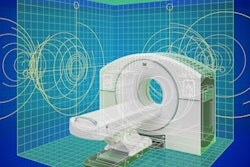Dear Molecular Imaging Insider,
As one of its early pioneers now describes it, hybrid PET/CT imaging may best be considered a technical evolution that has the potential to become a clinical revolution. That was the consensus of a pros and cons session at ECR 2023 discussing total-body and long axial field-of-view PET/CT scanners. Find out more in today's top article.
As you see, we're still catching up with a few notable presentations. From March 1-5, however, our editorial team was onsite in Vienna with live reports from the scientific sessions.
With green radiology emerging as a hot topic this year, for instance, a group in Switzerland said simply, "Turn it off." That is, a presenter from University Hospital Basel discussed saving energy and reducing carbon emissions just by turning off PET/CT scanners and other idle modalities overnight.
In another session, a group at Ludwig Maximilian University Munich presented a reader study that validated PSMA-RADS 1.0 for stratifying prostate cancer lesions in PSMA-PET/CT imaging. The system could be especially valuable for inexperienced readers, they wrote.
PET has revealed new insights on COVID-19 brain infection, according to other research presented at the ECR. A group in India suggested that FDG-PET/CT imaging can detect active COVID-19 brain infection sites -- more effectively even than MRI.
And in another talk, a researcher from the Baheya Foundation for Early Detection & Treatment of Breast Cancer in Giza, Egypt, presented findings that positron emission mammography is highly accurate for assessing breast cancer's response to chemotherapy.
In other recent news, the European Association for Nuclear Medicine's (EANM) Neuroimaging Committee looked ahead and predicted a steep uptick in PET imaging if the monoclonal antibody lecanemab receives European Union approval for the treatment of Alzheimer's disease.
In addition, the Society of Nuclear Medicine and Molecular Imaging and the EANM recently released a new practice guideline for somatostatin receptor PET imaging of patients with neuroendocrine tumors (NETs)
Lastly, with the thought of green radiology still fresh from ECR, we noted a group of European companies has plans to develop "turnkey" options for dismantling aging cyclotrons -- an estimated 18,000 tons of steel and other materials that need to be sustainably processed in the next 15 years.
That's all for now. We've highlighted only a few of the reports posted in the Molecular Imaging Community. For the full list, see the lineup below.




















